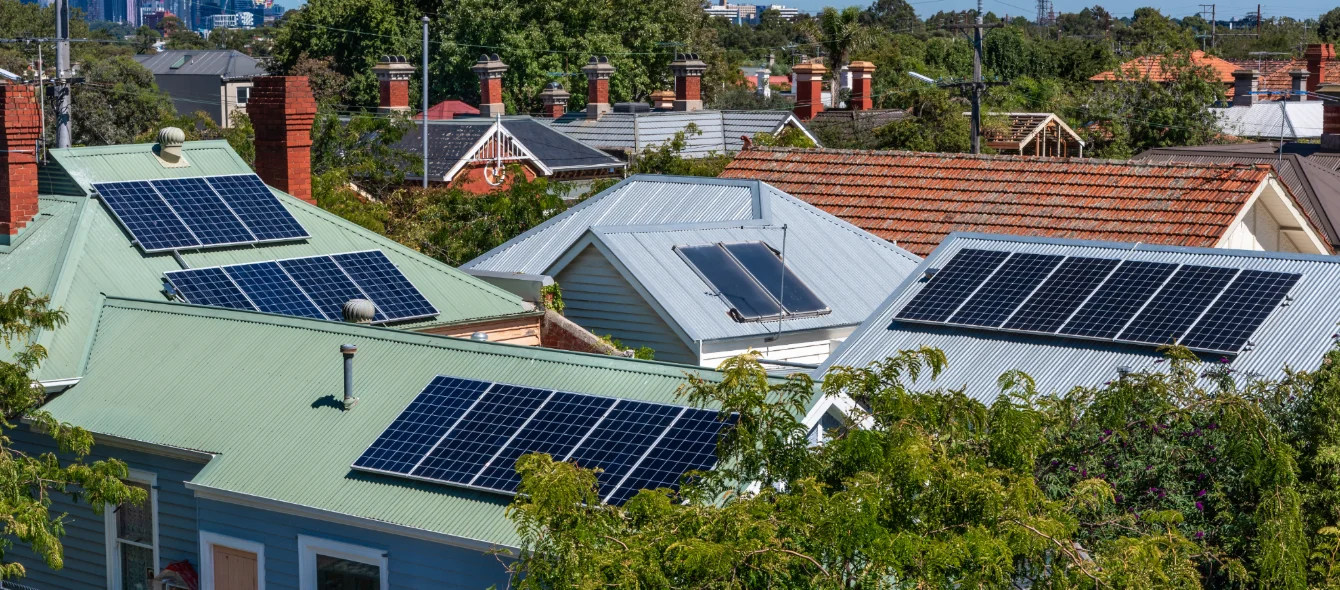Residents of Melbourne, Australia, may be surprised to see large boxes appearing on local utility poles. The boxes, which contain batteries, are an innovative solution to the problem of local electricity distribution system congestion. Australian utility United Energy is behind the experimental project and has received A$4 million in funding for the A$11 million trial from the Australian Renewable Energy Agency.
Low-voltage electricity distribution
Electricity systems were designed to bring power from large power plants to consumers, with the voltage stepping down from high-voltage, long-distance transmission to medium voltage and then low voltage for local distribution networks – a uni-directional system.
Distribution transformers play a key role in the low voltage system, by keeping voltage within acceptable parameters as high voltage can damage appliances and machinery. These transformers need to operate with their design limits, which can be tested as demand in a particular locality rises, potentially causing distribution constraints.
At the same time, the installation of residential roof top solar systems upends the uni-directional design of local distribution systems by placing a generation source at the opposite end of the system to that which was originally intended.
The installation of a high number of residential systems can affect local power quality, as well as having adverse consequences for the residential systems themselves, owing to voltage rise.
Wider problem
The problems United Energy are addressing and the lessons learnt should have widespread application. Solar power is available to the ordinary consumer in a way that no other renewable energy technology can currently match. In 2020, solar power was again the generation technology with the highest net installed capacity worldwide, reflecting not just its low cost but its accessibility.
According to SolarPower Europe’s Global Market Outlook 2021-2025, rooftop additions worldwide totalled 60.6 GW in 2020, up 46% year on year. This is the equivalent of adding three times the generation capacity of a medium-sized country, such as Belgium, every year.
Technical constraints
Solar power is, of course, variable, rising with the sun, typically reaching a peak at midday and then falling away to zero during the night. Grid interconnection is therefore very important for residential users. To make the most of solar panels, householders need to export excess power during the middle of the day and then import grid power when the sun is weak or has gone to bed.
As the number of residential solar systems in a particular locality rises, more current is being pushed out into the local distribution grid, particularly at midday. And to export power, a solar system’s voltage needs to be higher than that of the local distribution system.
If the voltage gets too high, the inverters in residential solar systems shut off. The consequence is, that at the moment of maximum generation, clean power is lost. This is not only a waste of renewable energy, but affects householders’ returns from their solar system.
The problem tends to be most acute in rural areas, particularly at the ‘end of the line’, and in developing countries with poor quality local distribution networks. However, it can also be a problem in residential city areas where rooftop systems are becoming the norm.
Local benefits
Installing a battery alongside a residential solar system is an individual solution, but United Energy’s project aims to deliver local system benefits for all. Retail company Simply Energy will manage the network of pole-mounted batteries as part of its Virtual Power Plant system to provide demand-side management.
Electric Avenue

At times of high solar generation, the batteries act as balancing points of ‘consumption’, but with the power available later after the solar peak, allowing houses without solar installed to benefit from renewable energy as well. By locating the storage in the heart of the local distribution system, both expensive and disruptive upgrades and residential solar generation curtailment can be avoided and power quality improved.
This, in turn, should allow much more distributed solar power to be installed in the same locality, boosting green power generation.
Following a trial of two storage boxes, United Energy’s ‘electric avenue’ project will see 40 30kW boxes installed over the next 18 months in the Melbourne area to support 3,000 houses.
